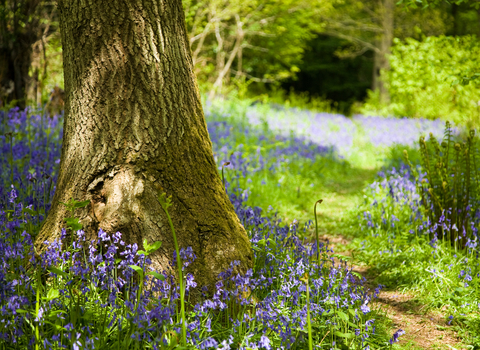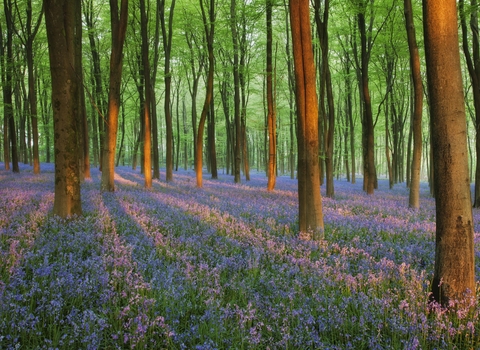©Philip Precey

©Paul Lane

©Luke Massey/2020VISION

©Guy Edwardes/2020VISION
Bluebell
In April and May, our ancient woodlands are awash with the much-loved, nodding heads of the bluebell. Millions of bulbs can exist in just one wood, giving rise to the 'blue carpets' that are a springtime joy.
Scientific name
Hyacinthoides non-scriptaWhen to see
April to MaySpecies information
Category
Statistics
Height: up to 50cmProtected in the UK under the Wildlife and Countryside Act, 1981.
Habitats
About
The bluebell spends most of the year as bulb underground in ancient woodland, only emerging to flower and leaf from April onwards. This early flowering allows it to make the most of the sunlight that is still able to make it to the forest floor habitat, before the canopy becomes too dense. Millions of bulbs may exist in one bluebell wood, causing the blue carpets we so keenly associate with spring, and new plants are sometimes able to split off from these bulbs and grow as clones.The Bluebell attracts the attention of plenty of pollinating insects.
How to identify
The bluebell is, perhaps, one of our most famous and unmistakeable woodland flowers: look for long, narrow, drooping leaf fronds, and bending flower stems that are heavy with nodding, blue bell-shaped flowersDistribution
Widespread.In our area
By volunteering for Cumbria Wildlife Trust you can help with our habitat conservation work. And you'll make new friends and learn new skills along the way.
Did you know?
The bluebell's Latin name, Hyacinthoides, comes from a Greek myth: when the Prince Hyacinthus died, the tears of the god Apollo spelled the word 'alas' on the petals of the hyacinth flower that sprang up from his blood. Non-scriptameans unlettered and distinguishes the bluebell from the similar-looking hyacinth.The Wildlife Trusts manage many woodland nature reserves sympathetically for the benefit of all kinds of wildlife. A mix of coppicing, scrub-cutting, ride maintenance and non-intervention all help woodland wildlife to thrive.
By volunteering for Cumbria Wildlife Trust you can help with our habitat conservation work. And you'll make new friends and learn new skills along the way.
